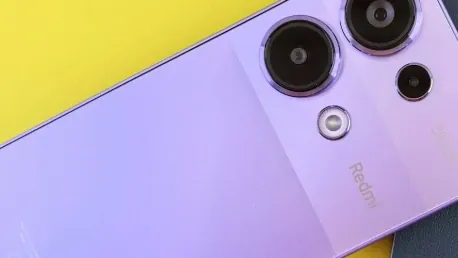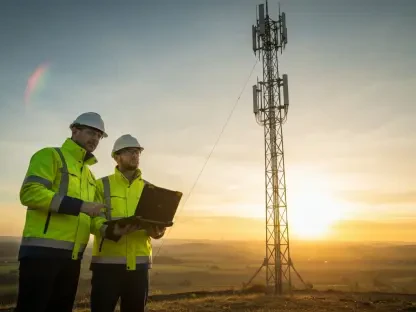The launch of Xiaomi’s latest budget smartphone, the Redmi 14R, in China has attracted attention for its attractive design and budget-friendly price point. However, while the phone offers some noteworthy features, certain technical specifications and performance aspects fall short against market competition.
Sleek Design and Display Quality
iPhone-Inspired Aesthetics
The Redmi 14R’s design draws heavily from the iPhone’s iconic rectangular form factor, providing a premium look and feel despite its budget price. The phone is available in four colors: Shadow Black, Deep Blue Sea, Olive Green, and Lavender, catering to various consumer preferences. This range of colors allows Xiaomi to appeal to a broader demographic who might be looking for stylish options.
Matching its appealing exterior, the phone’s build quality is commendable, offering a sturdy feel that belies its budget status. While many budget smartphones might skimp on the materials to cut costs, Xiaomi has ensured that the Redmi 14R feels robust and well-put-together in hand. The strategic borrowing of design elements from more expensive models gives it an edge in a fiercely competitive segment, visually positioning it as a higher-end product.
Impressive Display Features
One of the standout features of the Redmi 14R is its 6.88-inch LCD display, which delivers HD+ resolution. With a 120Hz refresh rate and 600 nits peak brightness, the display ensures smooth scrolling and decent visibility even under direct sunlight. This is particularly impressive for a budget smartphone, as most competitors in the same price bracket might offer lower refresh rates and brightness levels.
The screen’s large size and high refresh rate enhance user interaction, making activities such as web browsing, social media, and video streaming visually pleasing. Furthermore, the HD+ resolution offers crisp and clear visuals, which is a significant draw for budget-conscious consumers who prioritize screen quality. Despite its budget status, the Redmi 14R’s display does not cut corners, providing a visual experience that can rival even some mid-range options, highlighting Xiaomi’s commitment to delivering value.
Technical Specifications: Where It Falls Short
Moderate Processor Performance
Under the hood, the Redmi 14R is powered by the Qualcomm Snapdragon 4 Gen 2 processor. While adequate for basic tasks, it lags behind competitors in terms of performance, especially for users seeking more power for gaming or multitasking. This limitation becomes apparent when running graphically intense applications or juggling multiple high-demand apps, affecting the overall responsiveness of the device.
This underwhelming performance is particularly noticeable because many competing budget smartphones have moved towards more powerful chipsets, offering better value for similar or slightly higher prices. Users who demand more from their smartphones may encounter sluggishness and occasional lags during intensive use, which could detract from the overall experience. Consequently, the choice of processor might be a deal breaker for potential buyers looking for more robust performance in their budget phone.
Memory and Storage Options
The phone offers three memory and storage combinations: 4GB RAM with 128GB storage, 6GB RAM with 128GB storage, and 8GB RAM with either 128GB or 256GB storage. Despite these options, the Snapdragon 4 Gen 2 processor limits the overall performance. The ability to expand storage up to 1TB via a microSD card is practical, but it does not entirely compensate for the device’s underwhelming processing capability, leaving users wanting more in terms of performance.
While the memory and storage options offer flexibility, they might not fully deliver on expectations due to the inherent limitations of the processor. This creates a scenario where, despite having ample storage space and sufficient RAM, the device might still struggle with more demanding applications and multitasking. For consumers who primarily use their phones for basic tasks and media consumption, these configurations might suffice, but power users could find the performance lacking, making them consider alternative options within the same price range.
Camera and Photography Features
Basic Camera System
The Redmi 14R is equipped with a 13-megapixel main camera and a 2-megapixel macro camera, along with a 5-megapixel front-facing camera. While these specifications are standard for budget phones, there are cheaper alternatives on the market offering superior camera functionality. The main camera, despite its sufficient megapixel count, might not deliver the quality expected by photo enthusiasts, especially under varying lighting conditions.
This basic camera setup could disappoint users who prioritize mobile photography, as many other budget smartphones have started offering higher-quality sensors and additional lenses to enhance versatility. The front-facing camera also remains fairly standard, suitable for video calls and modest selfies but falling short for more creative photography needs. In scenarios that demand advanced camera performance—such as low-light settings or fast-moving subjects—the Redmi 14R may struggle to deliver the required results, limiting its appeal to a broader audience.
Photography Usability
For casual users, the phone’s camera system might suffice for basic photography needs; however, it may struggle with more demanding photography scenarios, such as low-light conditions or fast-moving subjects. The 13-megapixel main camera can capture decent daytime shots, but noise and blur become apparent in less-than-ideal lighting conditions. Similarly, the 2-megapixel macro camera might provide some novelty for close-up shots but lacks the detail and clarity expected by more discerning users.
The usability of the camera system could thus be seen as a shortfall, especially when compared to other budget smartphones that offer advanced features like night mode and enhanced image processing. The selfie camera, while serviceable, might not appeal to users who value detailed and high-quality images for social media. Overall, the camera system fits the bill for basic use but lacks the prowess to stand out in a crowded budget market where competitors are raising the bar in photography capabilities.
Battery Life and Charging Speed
Standard Battery Capacity
The phone houses a 5,160 mAh battery, which is fairly standard in today’s market. The battery life should be sufficient for a day’s use under typical conditions. This capacity allows users to enjoy prolonged periods of media consumption, browsing, and other activities without frequent recharging, a significant plus for those who rely heavily on their smartphones throughout the day.
However, the actual battery performance can vary based on usage patterns. While light to moderate users may find the battery life satisfactory, heavy users might need to keep an eye on their battery levels, especially if engaging in resource-intensive activities. The device’s power management capabilities will play a crucial role in how well the battery performs over time, and only prolonged use can reveal its real-world efficiency.
Slow Charging Capability
One significant drawback is the 18W charging speed. In a market where faster charging solutions are becoming commonplace even in budget segments, this could be seen as a disadvantage, especially for users who prioritize quick charging times. Waiting for a phone to recharge can be inconvenient, and consumers have come to expect faster solutions even in budget models.
The slow charging speed might deter potential buyers who are on the lookout for quick top-ups during their busy schedules. Competing smartphones in the same price bracket often offer faster charging capabilities, making the Redmi 14R’s slower speed a notable downside. Considering modern consumer expectations for convenience and efficiency, this aspect could be a deal breaker, affecting the overall competitiveness of the Redmi 14R in the crowded budget smartphone market.
Additional Features and Connectivity
5G Support and Connectivity
A significant selling point for the Redmi 14R is its 5G support, making it an appealing option for consumers looking to future-proof their investment in a budget smartphone. As 5G networks continue to expand, having a 5G-enabled device ensures faster data speeds and better network reliability. This future-ready feature adds value to the Redmi 14R, distinguishing it from other budget options that might still rely on 4G LTE.
Additional connectivity features include a side-mounted fingerprint sensor and a 3.5mm audio jack. The fingerprint sensor enhances security and accessibility, offering users a quick and efficient way to unlock their phones. Meanwhile, the inclusion of a 3.5mm audio jack caters to traditionalists who prefer wired headphones, adding an element of versatility in a market where many phones are dropping this feature.
Operating System and Software
The device runs on the latest Android 14-based HyperOS, offering a modern software experience and access to the latest features and security updates. This is an advantage for users who value up-to-date software, as it ensures compatibility with the latest apps and services. Xiaomi’s HyperOS aims to provide a smooth and user-friendly interface, enhancing overall usability.
Despite its budget nature, the inclusion of the latest Android version positions the Redmi 14R as a forward-looking choice, ensuring longevity and relevance in a rapidly evolving tech landscape. Users can expect continued support and regular updates, which are crucial for maintaining security and performance over time. This software experience, paired with the hardware capabilities, creates a balanced usage environment for everyday needs.
Pricing Strategy and Market Position
Cost Analysis
Pricing for the Redmi 14R ranges from $155 for the base model with 4GB of RAM and 128GB of storage to $265 for the top-tier model with 8GB of RAM and 256GB of storage. While the base model offers decent value, the higher-tier models’ pricing seems less justified given the modest upgrades in specifications. Consumers might find the incremental cost for more storage and RAM to be unappealing when the overall performance does not see a corresponding improvement.
This pricing strategy could impact the marketability of the higher-tier models, making the base model the most attractive option for budget-conscious buyers. Given the competitive landscape, where other brands offer more compelling features at similar prices, Xiaomi may need to reassess its pricing to ensure better alignment with consumer expectations and market dynamics.
Competitive Landscape
Xiaomi’s latest budget smartphone, the Redmi 14R, recently made its debut in China’s competitive market, garnering attention for its sleek design and wallet-friendly price. The smartphone boasts a visually appealing build that’s sure to attract numerous consumers. With a vibrant display and decent build quality, it aims to offer good value for money without breaking the bank. Additionally, the phone features a reliable battery life and a user-friendly interface, ensuring a satisfactory everyday user experience.
However, it’s important to note that while the Redmi 14R comes with several commendable attributes, it doesn’t quite meet all expectations when it comes to technical specifications and overall performance. Analysts and tech enthusiasts have pointed out that the device lags behind in certain areas compared to its market competitors. For example, the camera quality and processing power may not be as impressive as those found in rival devices.
Despite these shortcomings, the Redmi 14R remains an appealing option for budget-conscious buyers who prioritize design and functionality over cutting-edge technology.









